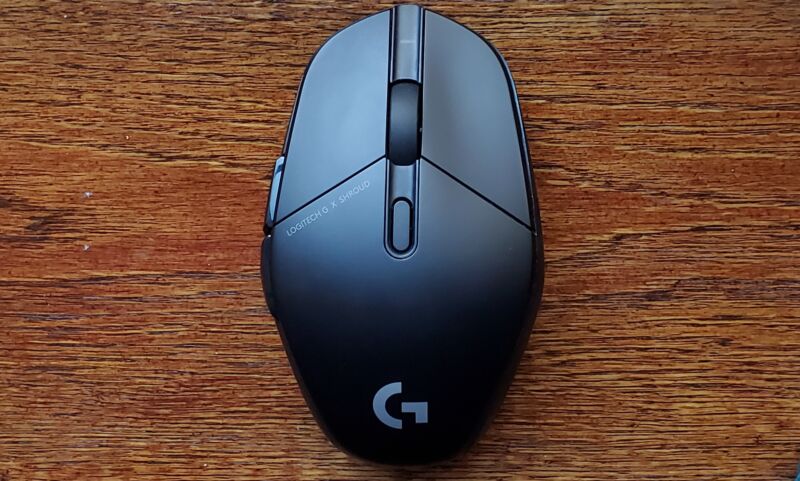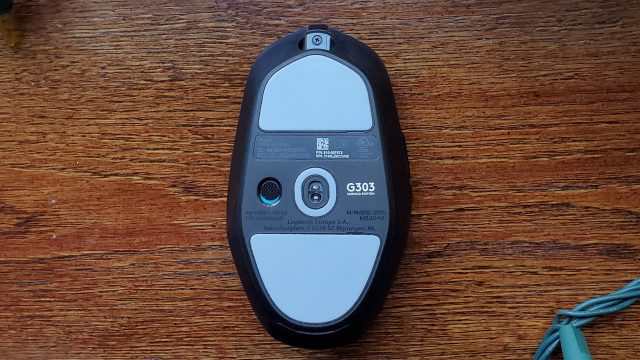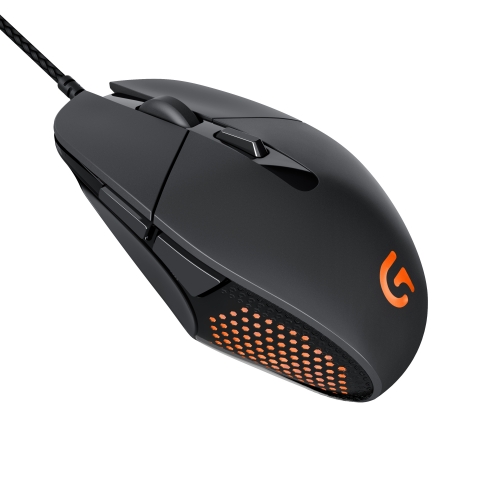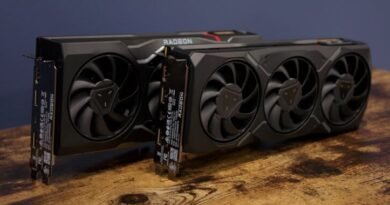Logitech G303 Shroud Edition wireless mouse review: Rough around the edges
[ad_1]

Scharon Harding
What do you get when you take 2015’s Logitech G Daedalus Apex G303, halve its weight, tweak the length and width, and cut the cable? Well, you get another G303. But this time, it’s called the Logitech G G303 Shroud Edition. It’s way more powerful and expensive ($130 MSRP) than its predecessor, and it’s not for everyone.
Some of the changes made to the G303 were necessary for the mouse to compete in today’s gaming landscape. At 2.6 oz (75 g), it’s ready to compete in first-person shooters and for long sessions without tiring out your arm. At the same time, it avoids the aggressive sub-2-oz (57 g) ultralight category.
The G303 Shroud Edition is named so because it was made to the specifications of pro streamer Michael “Shroud” Grzesiek. What that means for you, besides some subtle Shroud branding on the mouse, is a wider, flatter device. You’ll need bigger hands to find comfort here, and even then, the mouse’s pointy edges may turn you off. But if you’re bigger-handed and have been seeking a wireless gaming mouse for your fingertip or claw grip, you’ll be proud to rock the Shroud.
| Specs at a glance: Logitech G303 Shroud Edition | |||
|---|---|---|---|
| Sensor | Logitech Hero 25K optical sensor | ||
| Connectivity options | 2.4 GHz USB-A dongle, USB-C-to-USB-A cable | ||
| Programmable Buttons | 6 | ||
| Onboard profiles | 1 | ||
| Lighting | None | ||
| Size | 4.92 x 2.50 x 1.57 inches (125 x 63.5 x 40 mm) | ||
| Weight | 2.6 oz (75 g) | ||
| Warranty | 2 years | ||
| Price (MSRP) | $130 | ||
| Other perks | Wireless extender | ||
Impressively lightweight
There are a few reasons some hardcore gamers won’t touch a wireless mouse. One is fear of lag and/or dropped connections (although, I’d argue wireless mice have improved tremendously over the past few years), but the more obvious one is weight. Because wireless mice require batteries, they can feel heavy to push around, making swiping movements more tiring and, perhaps, harder to execute. When some mice go as far as to cut holes in their chassis to save weight, like the 1.72-ounce (49-gram) Cooler Master MM720, heavier mice are getting less popular, especially for those constantly moving their mouse around, like FPS gamers.
Something as sparse as the MM720 is supereasy to fling about wildly so you can target your enemies with speed. But if you’re playing a slower-paced game, you may not need such a minute product. Or you may just prefer something that feels more substantial in your hand.
The G303 Shroud Edition finds a comfortable middle ground. The old G303 weighed 4 oz (113 g), which would make it kind of heavy for a competitive gaming mouse today, even a wireless one. At 2.6 oz (75 g), the the new G303 feels light but not dainty or cheap, and it makes a good candidate for fingertip grippers.

Scharon Harding
It’s lighter than some similarly priced wireless gaming mice, including the Razer DeathAdder V2 Pro (3.1 oz, or 88 g), SteelSeries Prime Wireless (2.82 oz, 80 g), and, a fan favorite, the Logitech G Pro Wireless (2.82 oz, 80 g). You can go lighter, even without bringing in a cable. Logitech’s own Pro X Superlight is under 2.2 oz (62 g), according to the vendor, and the Glorious Model O- Wireless is about 2.29 oz (65 g). But for many, the Shroud Edition’s weight offers a good balance between mobility and control.
The underside of the mouse has a pair of nonadditive PTFE feet, but I’ve tested gaming mice that get a better boost from their feet, especially when the feet cover a greater percentage of the underside. I’ve felt mice that seem lighter because of their feet; the G303 feels like a 2.7-ounce (77-gram) mouse in action.

Scharon Harding
Tweaked dimensions
Besides being wireless, there are a few other ways the new G303 differs from the prior model. This new mouse was supposedly catered to Shroud’s hand, which seems to enjoy wider, flatter mice with plenty of room for the pointer and middle fingers.

The original G303 had RGB and a cable.
Both have a general shape reminiscent of a diamond, but the new G303 seems to have more pronounced corners, so to speak, on the left and right side. Yet the new G303 is barely wider, measuring just 0.1 inch (2.5 mm) more across than the 2.6-inch-wide (66 mm) G303 Daedalus Apex.
The bigger difference is in the length. The new mouse is 4.92 inches (125 mm) long, while its predecessor is only 4.57 inches (116 mm). That extra length gives you more space to rest your pointer and middle fingers, particularly when palm gripping. My fingertips still hang slightly off the buttons, but they don’t hang enough to droop or lose power over the left- and right-click buttons.
I more often used the mouse in a claw grip. That’s partially because it’s my more dominant grip but also because the edges are so pointy that, in a palm grip, they sit in the crux of my thumb uncomfortably. In a fingertip grip, the pointy edge on the left side is closer to the pad of my thumb allowing me greater control of the overall mouse but making it harder to reach the forward side button, especially without accidentally left-clicking. The forward side button also slopes down and is past the part of the diamond that juts out, unlike the back button, making it harder to reach.
I have longer hands for a woman and felt that the mouse’s width helped balance the minimal height out, but I was dragging my pinky on the mouse pad too much when palm gripping.
-
Palm-gripping the Logitech G303 Shroud Edition.
Scharon Harding -
Claw-gripping the Logitech G303 Shroud Edition.
Scharon Harding
However, I had a man with slightly larger hands than me try the G303 Shroud Edition. He found the height substantial and both side buttons easily reachable without adjusting his hand’s positioning.
The mouse is also pretty flat to comfortably fill out my palm for a palm grip or to give me much support in my fingertip grip. It’s 1.57 inches (39.9 mm) tall, which isn’t short, but the hump isn’t far back enough to hit my palm naturally.

Scharon Harding
[ad_2]
Source link




